Best Marketing Books To Become a Better Marketer (With Summaries)

The best marketing books are timeless, and teach you skills that make you a better marketer and business leader.
The thing is, everyone has a different mix of skills and experiences. What is “best” for a CMO and what is “best” for a junior marketer are very different.
So while there is no universal list of best marketing books — below, you’ll find books that will help you improve at marketing, depending on what kind of new ideas you’re looking to get.
Let’s dig in!
The best marketing books for:
- Communication & Interpersonal skills
- Storytelling and narrative building
- Writing better copy
- Strategy, Go-To-Market, Analysis
- People management & team building
- Working with Sales
Communication & Interpersonal skills
As marketers, our jobs require us to influence people. We have to influence not only customers and prospects, but our colleagues and partners. The following are the some of the best books for helping you improve your communication and interpersonal skills:
How To Win Friends and Influence People
One-line summary: To influence people, you have to understand human nature, then work with it and not against it.
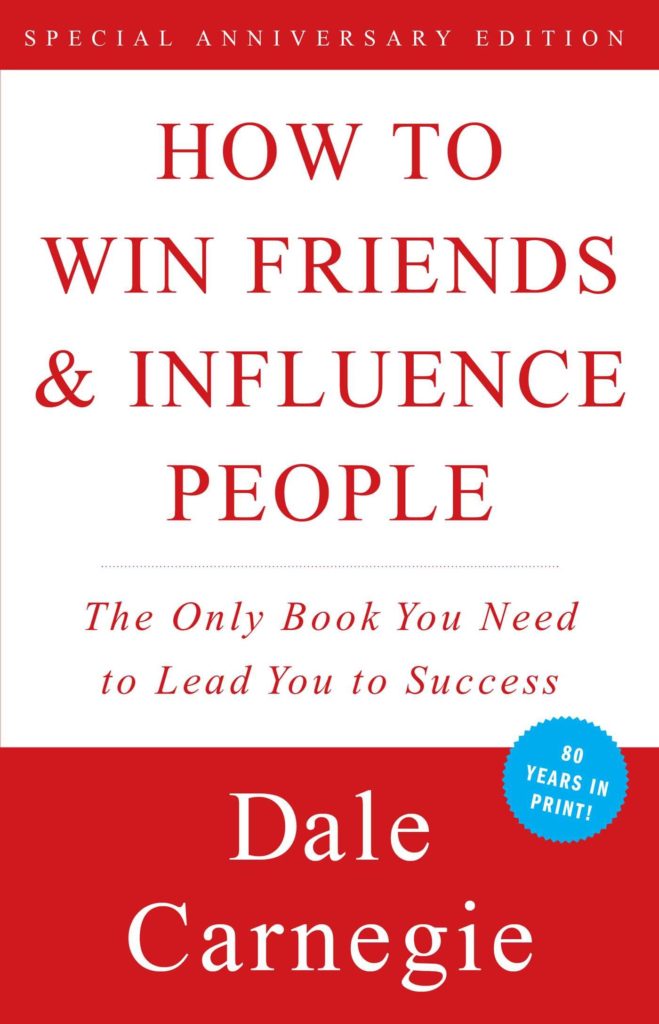
I’m sure you’ve heard of this book.
It’s from the 1930s, but it’s still relevant, because at its core, it’s a book about human nature.
Dale Carnegie argues that in order to get what we want, we must master influencing other people. And in order to influence people, we must know how to motivate them to do what we want. And the way to motivate them is by understanding human nature — the prideful, emotional, egotistical, self-centered and emotionally fragile creatures that we are — then using this understanding to influence people.
The book is a bunch of simple-sounding lessons and advice, and you’d be right. The value is in all the anecdotes that Carnegie has put in, which makes the lessons concrete and relatable.
Quotes from the book:
“When dealing with people, remember you are not dealing with creatures of logic, but with creatures bristling with prejudice and motivated by pride and vanity.”
“Personally I am very fond of strawberries and cream, but I have found that for some strange reason, fish prefer worms. So when I went fishing, I didn’t think about what I wanted. I thought about what they wanted. I didn’t bait the hook with strawberries and cream. Rather, I dangled a worm or grasshopper in front of the fish and said: “Wouldn’t you like to have that?”
“A person’s toothache means more to that person than a famine in China which kills a million people. A boil on one’s neck interests one more than forty earthquakes in Africa.”
Read next: my summary of How To Win Friends and Influence people.
Never Eat Alone
One-line summary: Being thoughtful and systematic about how you build relationships will give you a huge advantage over those who assume network-building happens naturally.
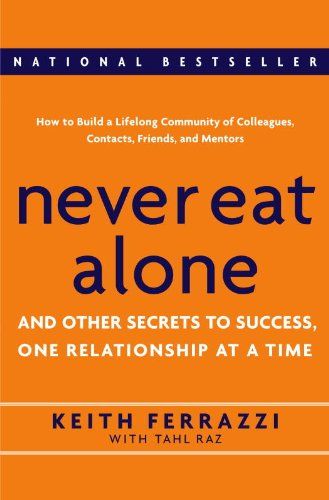
You always hear about building your network, how, as a marketer, you should always be networking, yada yada. But how do you actually do it?
Keith Ferazzi does a great job of summarizing the HOW of networking. There’s something in here for everyone. If you’re a beginner networker — his advice is to host dinner parties, meet them for lunch (hence, the title of the book). You have to eat anyway; so instead of sitting and looking at your phone or hanging out with the same meal-mates every time, Ferazzi suggests that you use that opportunity to build bonds with new people.
More advanced networkers will be interested to learn how Ferazzi has everything down to a science. When he hosts people over for a dinner party, he has the whole thing choreographed. In order to keep up with his thousands of contacts, Ferazzi tells you about his personal CRM, which he uses to keep track of things like birthdays, important notes, and opportunities to send gifts.
Quotes from the book:
“I’ve come to believe that connecting is one of the most important business — and life — skill sets you’ll ever learn. Why? Because, flat out, people do business with people they know and like. Careers — in every imaginable field — work the same”
“It’s better to give before you receive. And never keep score. If your interactions are ruled by generosity, your rewards will follow suit.”
“There are three things in this world that engender deep emotional bonds between people. They are health, wealth and children. When you help someone through a health issue, positively impact someone’s personal wealth, or take a sincere interest in their children, you engender life-bonding loyalty.”
Storytelling and narrative building
Regardless of the type of marketing you’re involved in, or how deep you are into your career, being able to tell a story is another foundational skill that successful marketers possess.
Here’s a few of the best marketing books for developing your ability to tell stories and inspire people:
Made To Stick
One-line summary: Most people communicate with only facts, but if you want to create a message that resonates with people, you have to learn how to tell better stories.
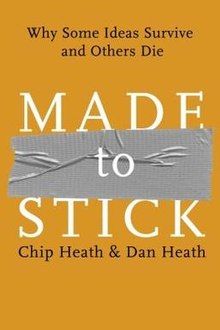
Chip and Dan Heath spend the entire book walking you through their checklist for making a “sticky” message. They propose that the stickiest messages are Simple, Unexpected, Concrete, Credible, Emotional, Stories (they call this their formula for “SUCCESS”)
Their message is essentially this: most people’s default method of communicating is by summarizing facts. This is fine if you’re relaying information, but most of us, especially marketers, are trying to affect some kind of behavioral change. And facts are “too rational” in order to inspire that change.
However, humans are hardwired to pay attention to narratives, especially those that are constructed in a certain way. Think about it this way. Which is more likely to leave an impact on you — a lecture about fire safety, or a fireman recounting a story about a dramatic rescue? Made To Stick is one of the best marketing books because not only does it shift your mindset away from facts and towards narratives, but it actually shows you how to practically do it with the SUCCESS formula.
Quotes from the book:
“A designer knows he has achieved perfection not when there is nothing left to add, but when there is nothing left to take away.”
When you say three things, you say nothing. When your remote control has fifty buttons, you can’t change the channel anymore.
In the sole U.S. presidential debate in 1980 between Ronald Reagan and Jimmy Carter, Reagan could have cited innumerable statistics demonstrating the sluggishness of the economy. Instead, he asked a simple question that allowed voters to test for themselves: “Before you vote, ask yourself if you are better off today than you were four years ago.”
If you make an argument, you’re implicitly asking them to evaluate your argument — judge it, debate it, criticize it — and then argue back, at least in their minds. But with a story […] you engage the audience — you are involving people with the idea, asking them to participate with you.
Writing better copy
Writing effectively is a skill that your company is going to rely on you to have. Whether it’s press releases, internal memos, copy for Facebook ads, or blog posts — writing is a skill that will serve you all throughout your marketing career. The below is a selection of books that get down to the tactics of writing better copy:
The Adweek Copywriting Handbook
One-line summary: Great copywriting is more than just the words you choose; it’s create a buying experience that hooks the reader.
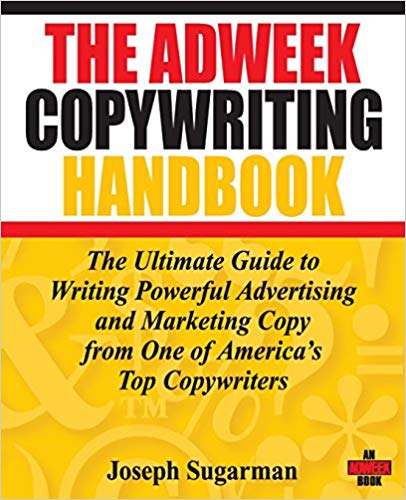
The title says “copywriting handbook” which implies that the book is about tactical copywriting advice, almost like a style guide. But really this is a crash course on buyer psychology.
Sugarman’s approach is that the copywriting process starts well before you type the first word. It starts with an understanding of your customer, then coming up with a framing of the product that makes it irresistible.
In one example, he talks about writing copy for a chess computer. A novice copywriter might write about the features of the device. An amateur might take the product, think about it, then sell based on the benefits (“make your kid smarter, workout for your brain” etc).
These are fine, but here’s what Sugarman did: he got a chess champion from Russia to appear in the ad, then he created a campaign around a computer that could challenge the best minds of the “Soviets”. The result was an engaging, successful ad that held attention across several campaigns.
This is one of the best books for marketers not only because of important mindset shifts like the above, but also because it is indeed packed with practical copywriting advice, like word choice — notice how Sugarman used “Soviet” instead of “Russian” — this book was written during the Cold War and he knew that the former would get a more visceral reaction.
The best part is a storytelling formula that Sugarman shares in the book. Once you read about it, you’ll start noticing it everywhere.
Quotes from the book:
Your ad layout and the first few paragraphs of your ad must create the buying environment most conducive to the sale of your product or service.
Never sell a product or service. Always sell a concept.
In all my ads I try to make the prospects imagine they are holding or using my product. For example, in one of my earlier calculator ads, I might have said, “Hold the Litronix 2000 in your hand. See how easily the keys snap to the touch. See how small and how light the unit is.” I create through imagination the reader’s experience of turning the knobs.
The desire to belong to and identify with a group of people who own a specific product is one of the most powerful psychological motivators to be aware of in marketing and copywriting.
This Book Will Teach You How To Write Better
One-line summary: A short, practical book about copywriting filled with actionable tactics
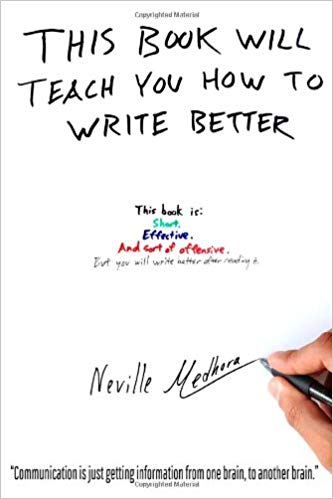
If you just want direct advice about how to improve your copywriting, this is one of the best books I’ve read that will do just that.
Neville Medhora’s copywriting book is hyper-actionable: In this book, he’s basically saying “Hey, write like this, not like that. Here’s how to improve your subject lines. Here’s an example of an email I would write, now let me break down for you exactly why I wrote it that way. Use this formula for writing better headlines.”
Because it’s so short, and so actionable, and so full of examples, I find myself referring to this book whenever I get stuck on a landing page or an email sequence.
Quotes from the book:
“Easy headline formula: [End result customer wants] + [Specific time period] + [Address the objections]
Example 1:
[triple the conversions on your ecommerce store] + [in 3 days] + [or I’ll refund your money]”
“You can’t force people to read something or consume something. So you must make it so that they WANT to pay attention. People respond to what is New, Novel, or Helpful. “
Strategy, Go-To-Market, Analysis
The best books on marketing always involve teaching you something about business strategy, and how to think like a business leader. That’s because ultimately, your job as a marketer is to grow the business.
The following books help you develop your strategic and analytical skills, so you’ll know how to navigate your company to success even when you’re in unknown territory.
Crossing The Chasm
My one-line summary: If your business has with a small, loyal base of customers, but you’re having trouble growing and expanding beyond that, it’s because you’ve fallen into the Chasm.
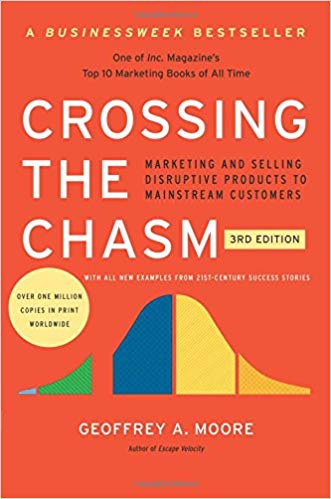
Marketing and business textbooks tell you that the market is segmented into different groups, who adopt new products at different rates. You have people who want the bleeding edge: the innovators and early adopters. Then eventually you’ll sell to the majority, and finally to the laggards. Just imagine how Facebook started with small ivy league schools and now everyone is using it.
Geoffrey Moore’s insight is that while building a fanbase with the innovators and early adopters will get you early traction, you will need to transform your go-to-market as you start to go after the majority of the market. Your approach in the beginning, when you’re a small scrappy startup, has to change as your company and your market matures.
After the book sets up this premise, Moore then goes quite detailed into the HOW. It’s packed with examples and he gives you frameworks. It’s an excellent book and its practicality is one of the reasons you’ll find it recommended in many “best marketing books” lists.
Quotes from the book:
Winning at marketing more often than not means being the biggest fish in the pond. If we are very small, then we must search out a very small pond, a target market segment that fits our size.
Cross the chasm by targeting a very specific niche market where you can dominate from the outset, drive your competitors out of that market niche, and then use it as a base for broader operations. Concentrate an overwhelmingly superior force on a highly focused target.
You do not have to pick the optimal beachhead to be successful. What you must do is win the beachhead you have picked.
Read next: my summary of Crossing The Chasm
Thinking, Fast and Slow
One-line summary: Our brains are really made up of two parts: one that thinks “fast” and one that thinks “slow” — and if we want to make better decisions, we have to know how each part works.
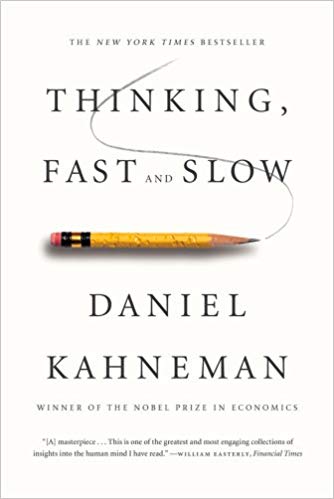
Kahneman takes his lifetime of psychology research and pours it into this book.
The key takeaway is that our brains have two systems: System 1 (fast, emotional, near-automatic) and System 2 (slow, logical, deliberate). They work in entirely different ways; so much that if you give expose these two systems to the same input, you’ll often get different outputs.
Reading this book was a bizarre experience. It felt like Kahneman could read my mind. He would pose scenarios, ask me to think about them, correctly predict my answer, and then explain to me all the cognitive errors I made while thinking.
For example, while System 1 helps us operate quickly and not over-think things like making tea or solve simple math problems, it does all sorts of weird things, like question substitution. When asked a question like “what part of that movie was your favorite?”, System 1 will actually switch that question with something easier to answer like “what is a scene that you can easily remember that you enjoyed”, and it will have done it so quickly that you never even realized it.
This is a great book for marketers to read, especially those in market research and analysis, who need to extract inferences from qualitative responses. Marketers in general should read this book because it makes you aware of bugs and errors in your thinking, so you can avoid making dumb assumptions / faulty thinking that leads to bad strategy.
Quotes from the book:
When faced with a difficult question, we often answer an easier one instead , usually without noticing the substitution .
People tend to assess the relative importance of issues by the ease with which they are retrieved from memory — and this is largely determined by the extent of coverage in the media.
Most of us passively accept decision problems as they are framed and therefore rarely have an opportunity to discover the extent to which our preferences are “frame-bound” rather than “reality-bound.”
Read next: my summary of Thinking, Fast and Slow
How Not To Be Wrong
One-line summary: When analyzing data, our intuition and “common sense” are prone to making predictable errors.
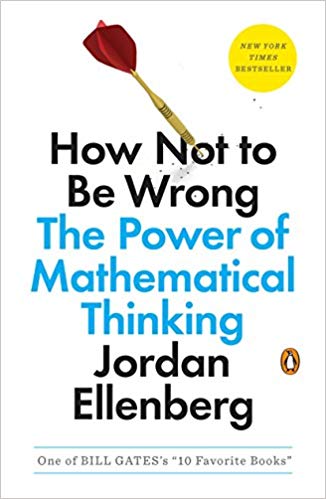
If you make decisions based on data, then you have to read this book.
As marketers, we’re constantly looking at data. Conversion rates. Revenue trends. DAU/MAU curves. Google analytics charts.
Here’s the thing though. it’s rare that marketers properly learn how to read this data properly to make sure you are arriving at sound conclusions. Most of us rely on math from school and pattern-matching we’ve picked up along the way.
We also rely a lot on instinct and our “common sense.” While common sense works in most domains, it usually fails when it comes to analyzing numbers.
This book is similar to Thinking Fast and Slow, in that it presents a scenario, asks you to think about it, and then proceeds to tear down exactly how flawed your thinking process was.
Ellenberg does an amazing job of presenting concrete scenarios that make you think (“If Facebook had data that implied your neighbor was a terrorist, what would you do?”, “what is more likely to be accurate, atheism or our living in a simulation?”) while also helping you improve your thinking around common things marketers might deal with (how to think about correlations in data; mistakes in analyzing trends)
This book will improve the quality of your analysis, which improves your ability to set up strategies and ultimately your effectiveness as a marketer who can grow a business.
Quotes from the book:
Math gives us a way of being unsure in a principled way: not just throwing up our hands and saying “huh,” but rather making a firm assertion: “I’m not sure, this is why I’m not sure, and this is roughly how not-sure I am.” Or even more: “I’m unsure, and you should be too.”
A mathematician is always asking , “ What assumptions are you making ? And are they justified?”
Impossible and improbable are not the same — not even close . Impossible things never happen. But improbable things happen a lot.
People management & team building
There’s an old proverb: “if you want to go fast, go alone, if you want to go far, go together.” So if you want to get far in marketing, you’ll need to know how to build great teams.
These are some of the best books for marketers who want to become inspiring, effective leaders:
The Hard Thing About Hard Things
One-line summary: Most management books are great for “peacetime” — when things are going well; but rarely do you find advice for “wartime” — when things are going really poorly; this is the book you need to read in wartime.
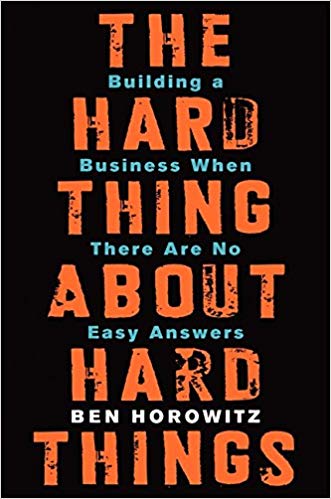
Would you hire someone that had awful references?
As in, the references are warning you and telling you, straight up, not to hire the person.
Most of us would not. But Ben Horowitz did, because he realized the difference between “peacetime” advice and “wartime” advice. He hired someone that had terrible references …and yet it was absolutely the right move. The hire, although a bad employee by many traditional measures, was exactly what Horowitz’s company needed at the time.
This book is a personal favorite because of stories like the above. It’s simply advice you wouldn’t hear anywhere. Same goes for the stories about Horowitz’s trying to raise money in the most hostile environment possible — he took his company public in the middle of the dot-com crash, and tried to raise more money during 9/11. Yet he somehow made it all work.
I’ve always thought that the best marketers are also great business leaders. And great business leaders are those that know how to navigate teams through scary times. A huge part of that is understanding the difference between peacetime and wartime, and knowing the mistakes most people make when faced with a perillous situation. After reading this book, I felt like I’d gained another 5 years of work experience.
Quotes from the book:
Startup CEOs should not play the odds. When you are building a company, you must believe there is an answer and you cannot pay attention to your odds of finding it. You just have to find it. It matters not whether your chances are nine in ten or one in a thousand; your task is the same.
The simple existence of an alternate, plausible scenario is often all that’s needed to keep hope alive among a worried workforce.
You must hire the right person for your company at this particular point in time. The head of sales at Oracle in 2010 would likely have failed in 1989.
Every time you make the hard, correct decision you become a bit more courageous and every time you make the easy, wrong decision you become a bit more cowardly. If you are CEO , these choices will lead to a courageous or cowardly company.
High Output Management
One-line summary: Your job as a manager is to maximize the output of your team.
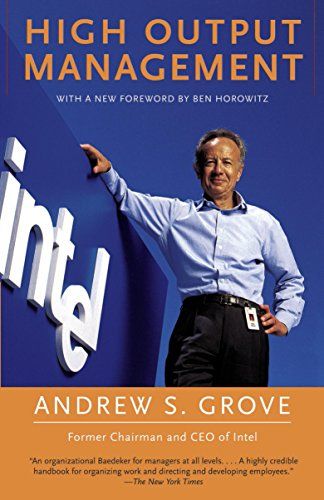
If you work in tech, I’m betting you’ve heard of “1 on 1 meetings” and “OKRs”.
Andy Grove’s High Output Management is the likely reason why those things are so common today. This is one of those books that every experienced manager in the tech industry seems to have read.
That’s because of Grove’s approach to management. Most people think of “management” as something to do with “being a manager of people.” Grove goes one level deeper, and defines management as the skill of contributing to the maximizing the output of your entire company.
Grove does this by approaching it from an engineer’s mindset. He teaches you how to analyze your organization to find its weaknesses, then how to systematically reduce those weaknesses; how to identify areas of leverage that give you an asymmetric return on your time. Personally, the most important takeaway for me was this idea that managers are “multipliers” — of cultural norms, of standards, of behaviors, of processes. Note that multipliers can be both positive and negative.
To him, management is more of a ‘hard’, process-based, system level skill. While the ‘soft’ people side of management is important, Grove is all about output, objectives and results. There is a direct line from this book to Google’s “OKR” framework.
Quotes from the book:
“Delegation without follow through is abdication”
“Remember too that your time is your one finite resource, and when you say “yes” to one thing you are inevitably saying “no” to another.”
“Just as you would not permit a fellow employee to steal a piece of office equipment worth $2,000, you shouldn’t let anyone walk away with the time of his fellow managers.”
“A manager’s output = The output of his organization + The output of the neighboring organizations under his influence”
Read next: my summary of High Output Management
The Score Takes Care of Itself
One-line summary: Strong leaders obsess over the inputs, not the outputs.
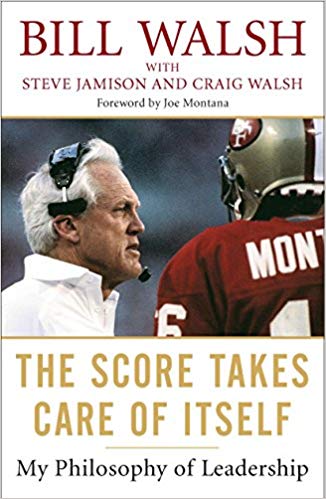
This one is a personal favorite. The book is the story of how NFL coach Bill Walsh took an underperforming team and transformed them into a championship-caliber team.
Walsh re-built the team by imposing a high standard, then holding everyone in his organization (everyone — not just the players, but also the receptionists) to this high standard.
He improved everyone’s performance by breaking down his high standards into small, coachable skills, then obsessing the perfect execution of those skills. Walsh was not obsessed about wins — he obsessed about leading indcators of performance; things he could control, and things he could consciously drill and improve.
As a marketer, this mindset is so important. If you’re running a campaign — random events, luck and external factors can determine the ultimate success or failure of that campaign. Walsh instead have you focus on your fundamentals, because there’s always a next campaign to run, and you improve your chances of running a successful campaign if you have the fundamentals down right.
Quotes from the book:
If you aim for perfection and miss, you’re still pretty good, but if you aim for mediocre and miss?
Maintain an ongoing level of concentration and focus that is abnormally high.
Champions behave like champions before they’re champions; they have a winning standard of performance before they are winners.
The exceptional assembly line comes first, before the quality car.
Read next: my summary of The Score Takes Care of Itself.
Working with Sales
Great marketers know how to work with their counterparts in sales. For many businesses, marketing and sales are teammates in a relay race, where marketing hands off leads that sales then closes. It’s rare that one can succeed without the other.
Here’s a collection of books that helps marketers build a productive relationship with their sales teams:
Predictable Revenue
One-line summary: How to grow by cold calling: break the process down into concrete steps, have someone specialize at each step, then do everything you can to improve the metrics at each step.
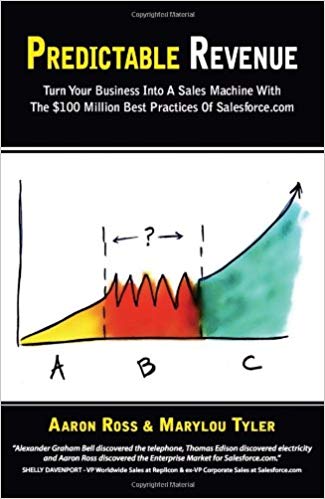
In this book, Aaron Ross and Marylou Tyler lay out the prospecting and cold-calling playbook that is the current industry standard.
This is an important book for B2B marketers, especially those focused on the enterprise, as you’ll learn how Ross used these strategies during his time at early Salesforce.
The big idea is to turn prospecting into an assembly line: break down the whole process into specialized jobs. Sales reps shouldn’t be cold-calling; they should be focused on closing deals. Ross and Tyler describe how your org should instead be structured and what activities your sales reps should be doing instead.
Like many of the books on this list, it’s refreshingly tactical, taking you into the nuts and bolts of how things actually work. You’ll see phone scripts and email templates. You’ll get guidance on what good conversion rates look like. If you’re in the readership sweet spot for this book (B2B, enterprise, western market) then my bet is you’ll be taking lots of notes from this book.
Quotes from the book:
Do your executive team and board know how much new ( qualified ) pipeline the company needs to generate per month? (This is the # 2 most important metric to track, right after closed business.)
Making the field salespeople do cold calls means having your highest-cost ( per hour ) sales resource perform the lowest-value ( per hour ) activity.
A rule of thumb is that for every 400 leads per month that require human attention, a company needs one Market Response Representative.
The Sales Acceleration Formula
One-line summary: How HubSpot grew to $100m revenue by making changes to their sales organization; from tweaking how they followed up with leads to how they approached hiring salespeople.
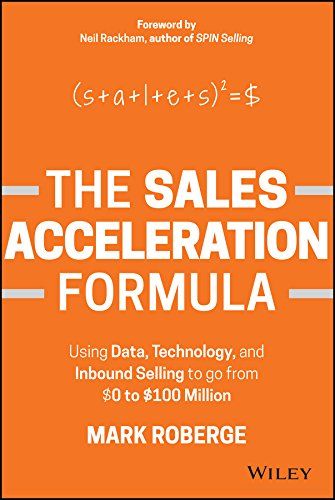
How do you accelerate sales? By making it repeatable. In this book, Mark Roberge breaks down 4 repeatable process you need to establish once you grow out of of your early days: hiring salespeople; training them; giving them the right sales process; giving them quality leads.
This may be one of the best, most non-fluff, actionable books on building a sales organization that you’ll ever read. That’s because Roberge has seen the whole story: he was the first sales hire, and eventually built a team of 450 people.
One of the repeating themes in the book is that a big reason why companies can’t scale their sales org is because they do things that intuitively make sense, but are actually terrible.
For example: new sales hires shadowing a top sales rep during their onboarding. Sounds harmless right? The problem is that different reps have different styles, and by doing this, your sales training is inconsistent — it’s dependent on who your “top” sales rep happens to be at the moment. Not scalable and you can’t accelerate that which isn’t scalable.
Quotes from the book:
Even though buyers do not always call back , they are usually listening. Add new information into each voicemail. Align the voicemails with the specific interactions the buyers have had with your company.
Unfortunately, high-activity salespeople coming from an established company with a no-brainer value proposition were not equipped with the skills to succeed in our context, even if they had been the top dog in their last role.
The best sales managers […] can identify the one skill that will have the biggest impact on a salesperson’s performance, and then customize a coaching plan around developing that skill.
The Ultimate Sales Machine
One-line summary: Lots of stories from the life of an archetypal salesperson.
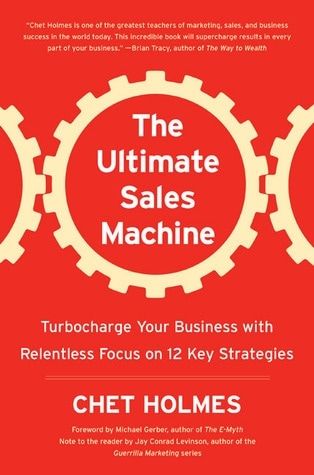
When you read the word “salesperson” what do you think of?
I’m guessing it’s a man in a suit, charismatic with the gift of gab, someone who has a firm handshake, someone who’s politely persistent and can talk his way into (or out of) anything.
That’s Chet Holmes in a nutshell. The book is basically sitting down next to the fireplace with Uncle Chet as he tells you stories from his sales career. The interesting thing about the book is that it’s very self aware. Holmes himself says that all the sales “lessons” in the book are common sense; and while that’s true, that’s not really where the value of this book comes from.
This book is important for marketers to read because it puts you inside the mind of a top-performing salesperson. You can succeed in sales with a variety of personalities — you don’t have to be the archetypal, extroverted, fast-talking salesperson — but there are values that are universal to successsful people in the profession:
They don’t quit, and refuse to lose. They’re focused on long-term relationships, and so they add value instead of try to make a quick sale. They’re politely aggressive, and believe they’re going to win. They’re masters of reframing a situation and persuading someone to their point of view.
If you read this book purely for sales advice, you’ll be disappointed. But if you want to slip inside the mind of an excellent sales person, so you can better evaluate your team or understand salespeople, this is one of the best books to read.
Quotes from the book:
Practically every client I’ve had has become a friend. Most have dined at my home or I at theirs.
Mastery is a direct result of pigheaded discipline and determination.
Every salesperson should have at least 2.5 hours a day of brand-new prospecting. And that’s for salespeople who have a full load of current clients. Salespeople who are not managing a large list of current clients need to do at least four hours per day of pure cold calling.
Read next: my summary of The Ultimate Sales Machine.
Conclusion
There’s no one list of books that everyone will agree is the best.
The books I’ve listed here have been very useful for me in sharpening my marketing (and marketing-related) skills, and I hope they do the same for you.
If there’s a book that should be on here, or if you’d like to discuss one of my choices — I welcome all feedback in the comments below or @davelocity
Postscript: It Doesn’t Always Have To Be Books
One last thing: books are not always the best way to learn skills.
Sometimes, the optimal way to learn something or get up to speed on a topic is via blogs, podcasts or online courses.
This is especially true if you’re trying to refine your understanding on a topic that is changing all the time, like SEO. The SEO world is changing on a monthly basis. In that case, it may be best to follow a handful of industry experts instead of relying on books, which get outdated.
As an example, here’s a list of SEO experts you should follow.